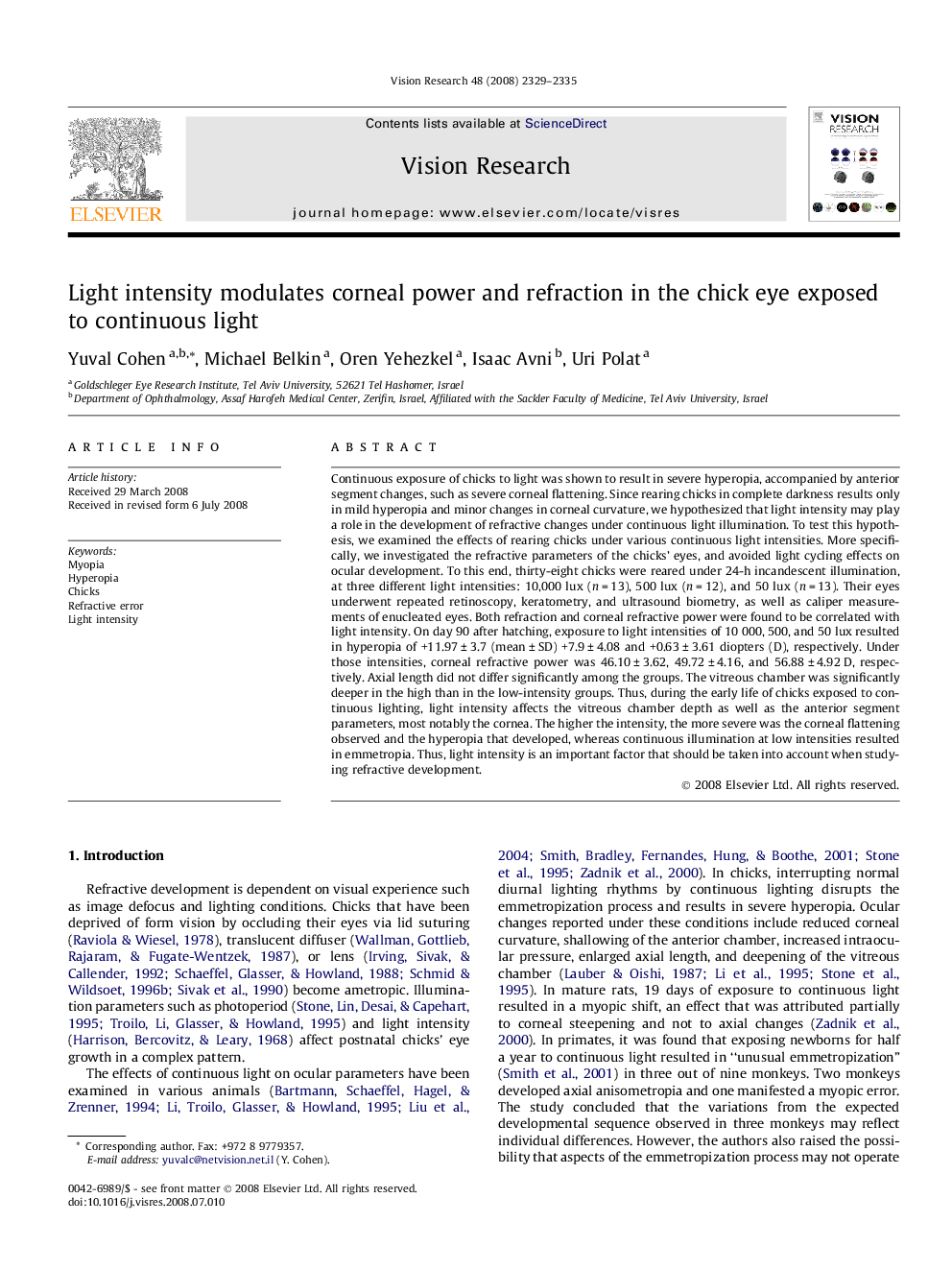| Article ID | Journal | Published Year | Pages | File Type |
|---|---|---|---|---|
| 4035567 | Vision Research | 2008 | 7 Pages |
Continuous exposure of chicks to light was shown to result in severe hyperopia, accompanied by anterior segment changes, such as severe corneal flattening. Since rearing chicks in complete darkness results only in mild hyperopia and minor changes in corneal curvature, we hypothesized that light intensity may play a role in the development of refractive changes under continuous light illumination. To test this hypothesis, we examined the effects of rearing chicks under various continuous light intensities. More specifically, we investigated the refractive parameters of the chicks’ eyes, and avoided light cycling effects on ocular development. To this end, thirty-eight chicks were reared under 24-h incandescent illumination, at three different light intensities: 10,000 lux (n = 13), 500 lux (n = 12), and 50 lux (n = 13). Their eyes underwent repeated retinoscopy, keratometry, and ultrasound biometry, as well as caliper measurements of enucleated eyes. Both refraction and corneal refractive power were found to be correlated with light intensity. On day 90 after hatching, exposure to light intensities of 10 000, 500, and 50 lux resulted in hyperopia of +11.97 ± 3.7 (mean ± SD) +7.9 ± 4.08 and +0.63 ± 3.61 diopters (D), respectively. Under those intensities, corneal refractive power was 46.10 ± 3.62, 49.72 ± 4.16, and 56.88 ± 4.92 D, respectively. Axial length did not differ significantly among the groups. The vitreous chamber was significantly deeper in the high than in the low-intensity groups. Thus, during the early life of chicks exposed to continuous lighting, light intensity affects the vitreous chamber depth as well as the anterior segment parameters, most notably the cornea. The higher the intensity, the more severe was the corneal flattening observed and the hyperopia that developed, whereas continuous illumination at low intensities resulted in emmetropia. Thus, light intensity is an important factor that should be taken into account when studying refractive development.
